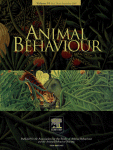Prey swarming: which predators become confused and why?
Jonathan M. Jeschke, Ralph Tollrian – 2007
When confronted with a swarm of their prey, many predators become confused and are less successful in their attacks. Despite the general notion that this confusion effect is a major reason for prey swarm formation, it is largely unknown how widespread it is and which predator or prey traits facilitate or impede it. We carried out experiments with four predator–prey systems: Aeshna and Chaoborus larvae, but not Libellula and Triturus larvae, became confused when confronted with high Daphnia densities. When combining this result with literature data, we found that predators became confused in 16 of the 25 predator–prey systems studied to date. Tactile predators appear to be generally susceptible, whereas visual predators are susceptible mainly when their prey is highly agile. This difference probably results from the superiority of the visual sensory system. However, while our study is an important step towards the mechanistic understanding of predator confusion, it also reveals how poor this understanding currently is.

